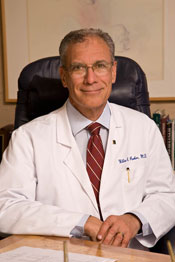Hello, Dr. Parker.
I am on Carla Dionne’s list, which I joined 11 years ago when I was first diagnosed with uterine fibroids at age 36. At that time, the ultrasound showed 3 fibroids. I have lived with them for all this time because my symptoms, although at times severe, were manageable.
Now, my fibroids have grown (apparently into one 8 X 8 X cm fibroid), the bulk symptoms are bothering me, I have anemia (successfully treated with prescription iron), and my bleeding is getting worse and more unpredictable.
I know it’s time for me to have this fibroid removed. However, I am very frustrated with the practice that came highly recommended to me. I had one meeting with a doctor there, but do not wish to go back to him, and I find that the other two surgeons each do separate procedures. I like that you routinely do several different treatments and may come to see you in California even if it means traveling. You are a fibroid specialist and not so much a gynecologist who happens to sometimes deal with fibroids.
My questions to you:
1. Would you think that the radiologist’s report, which states, “dominant upper uterine body fibroid,” means that it’s within the uterine cavity and therefore possibly treatable via hysteroscopy? He does not use the words “submucosal,” “subserosal, “intramural,” etc., just “upper uterine body.”
2. Do you think hysteroscopy is a “simple” procedure, which is what this practice is telling me?
3. What do you think of single-port laproscopic myo? Doesn’t the fibroid have to be low in the uterus in order to allow room for all the tools inserted through the belly button?
Obviously you can’t diagnose by email. I recognize I am asking for some big guesswork and won’t hold you to anything. I just happen to think that, after all this time suffering with it, this fibroid can actually be removed very easily.
Thank you in advance for your replies and for all the good work you do.
T
T,
1. Would you think that the radiologist’s report, which states, “dominant upper uterine body fibroid,” means that it’s within the uterine cavity and therefore possibly treatable via hysteroscopy? He does not use the words “submucosal,” “subserosal, “intramural,” etc., just “upper uterine body.”
Since the radiologist does not describe the type of fibroid, there is no way to tell from the report which type it is. The radiologist may be able to go back and get this information from the films, and you might ask them to do this. A better way to tell is with either a sonohysterogram (using fluid placed into the uterine cavity) or better yet is an MRI.
2. Do you think hysteroscopy is a “simple” procedure, which is what this practice is telling me?
I think it is highly unlikely that an 8 cm fibroid can be removed hysteroscopically. Perhaps they are planning to just look in the uterine cavity to see if it is possible.
3. What do you think of single-port laproscopic myo? Doesn’t the fibroid have to be low in the uterus in order to allow room for all the tools inserted through the belly button?
I have not adopted single-port myomectomy because I do not think the instruments are developed yet to the point where good suturing can be done. There should be plenty of room to remove an 8 cm fibroid laparoscopically with standard instruments.
Obviously you can’t diagnose by email. I recognize I am asking for some big guesswork and won’t hold you to anything. I just happen to think that, after all this time suffering with it, this fibroid can actually be removed very easily.
From what you describe, I would think a laparoscopic myomectomy should be straight-forward to perform in experienced hands.
Thank you in advance for your replies and for all the good work you do.
Thank you for saying this.
Bill Parker, MD



